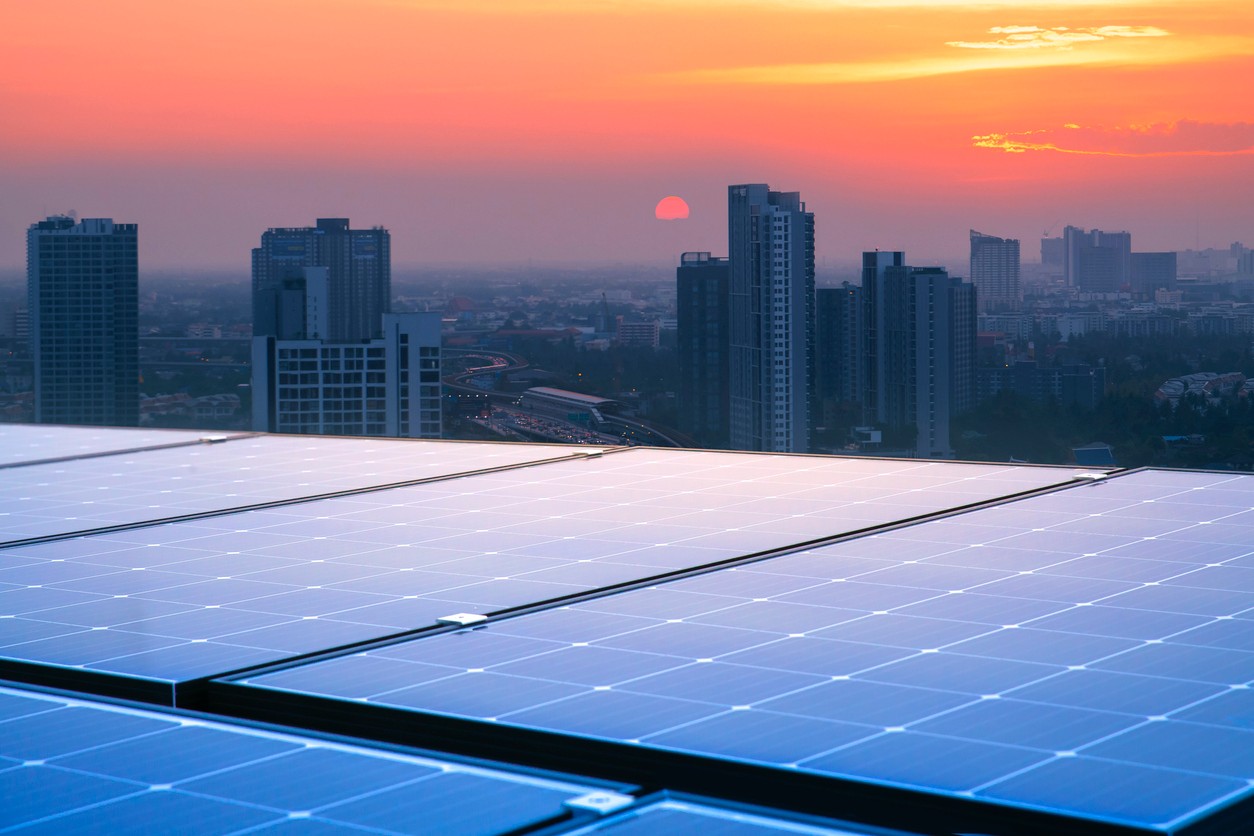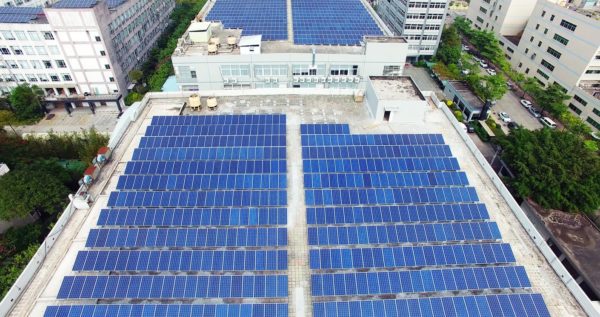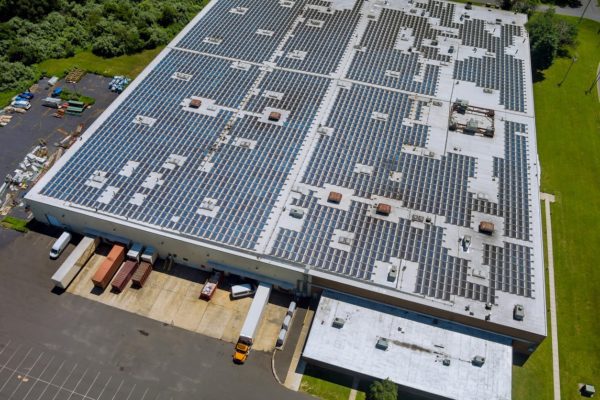
We might not consider California’s warehouses the main offenders when considering how logistics affects the environment. However, they generate a sizable quantity of greenhouse gas emissions and add to the industry’s overall carbon footprint. In actuality, supply chain emissions from warehouses make up close to 25% of total supply chain emissions.
Using solar commercial energy is helping companies to save the environment and reduce their carbon footprint. Going solar can help businesses to cut costs and take adequate measures to combat climate change and global warming.
What is a Sustainable Warehouse?

A sustainable California warehouse changes the popular perception of being inherently harmful to the environment. The sustainable warehouse utilizes a variety of diverse waste reduction and energy conservation measures which is why these facilities have a minimal environmental impact.
Because of this, a sustainable warehouse will prioritize circularity in a sector that is meant to be directionally streamlined and have a small carbon footprint. Although building a sustainable warehouse is no easy task, every logistics company with the correct vision can do it.
Green warehousing refers to improvements and initiatives that lower energy consumption using renewable energy sources and resources and lower non-recyclable trash generated during warehouse operations.
Ways to Reduce Warehouse Carbon Emissions

There are several sustainable ways businesses can adopt to reduce carbon emissions, such as going solar or using other renewable resources to replace fossil fuels. We will discuss some ways warehouses can use to reduce carbon emissions and combat climate change in a sustainable manner.
1. Building Insulation
Adequate insulation is the key to increasing the energy efficiency of a building. You can improve your building insulation to make the necessary adjustments; it will significantly reduce heat gain and loss.
Any action or initiative you will take will make a difference, whether it’s insulating pipes or filling roof and wall spaces with environmentally friendly insulation material.
Air curtains can be a wonderful technique to reduce the intrusion of outside air, which often changes internal conditions and requires a lot of energy.
2. HVAC Maintenance
It’s essential to ensure your HVAC system operates efficiently because HVAC emissions can be significant. A poorly functioning HVAC system will waste energy and may cause temperature and humidity fluctuations, endangering the condition of the items you store.
When HVAC systems, including air ducts, vents, and filters, are properly maintained, serviced, and cleaned, problems can be detected early, and the risk of future defects is decreased. AI may also be used to optimize HVAC operations, which offers superior energy performance than manual scheduling.
3. External Shading
Warehouse buildings require controlled HVAC regulation of the inside temperature, but it’s also essential to make the most of passive heat-blocking techniques. Consider installing awnings and shades around the perimeter of the building to save cooling costs in the summer. Also, planting trees and other vegetation types is a good idea to cool down the environment.
4. Solar Energy
Solar energy is making waves across many industries; it offers a sustainable solution to optimize building management and energy systems.
Large flat roofs are common in warehouses, making them an ideal place for commercial solar installation. You can significantly reduce your energy costs by producing your own renewable energy, which will help you become less dependent on energy derived from fossil fuels.
You can also start diverting your garbage from landfills by investing in a biomass boiler, making your warehouse structure circular, extremely effective, and low-carbon.
5. Waste Management
Warehouses generate a considerable amount of waste products which end up in packaging. It is essential to implement efficient waste management. This procedure helps reduce the number of greenhouse gases emitted during the production of these products and their disposal.
You can prioritize reducing the waste generated from your regular operations by reusing pallets and other packing materials. You can even switch to a paperless warehouse management solution that is entirely digital.
Impact of Reducing Carbon Emissions in Warehouses

Once you start reducing the carbon footprint from your warehouses, it may not show results immediately, but you’ll start to feel the difference in the long term.
Reducing our carbon footprint is one of the best things we can do to help the battle against global climate change. Once we accomplish this, we will enjoy the advantages of enhanced public health, a steady economy, and the preservation of biodiversity.
We will discuss how reducing carbon emissions in warehouses can impact the environment, living beings, and other creatures.
1. Mitigates the Effects of Climate Change
Carbon emissions cause environmental damage, and you can reduce these effects by reducing your carbon footprint because the less GHG we release, the less we contribute to global climate change.
Following are some detrimental environmental impacts of carbon emissions:
- Rising temperatures: Since 1880, the Earth’s atmosphere has warmed by 1.5°C. This may not seem like much, but these degrees alter the habitat ranges of plants and animals and regional and seasonal temperature extremes, sea ice loss, intensified rainfall, and severe drought.
- Rising sea levels: Since 1880, sea levels have risen by about 8 to 9 inches globally, displacing residents and damaging coastal habitats. If the rise in sea level does not stop, there is a risk to subways, roads, bridges, water supplies, power stations, oil and gas wells, landfills, and sewage treatment plants.
- Sea ice melting: Arctic sea ice has decreased by 30% since 1979. Sea ice has a significant impact on regulating the climate of the planet. It reflects the sunlight into space and acts as a habitat for various animal species. Sea levels would increase by roughly 70 feet if all of the glaciers on Earth melted, effectively flooding the world’s coastal cities.
- Precipitation patterns are changing: Extreme weather events (such as hurricanes, floods, and droughts) are occurring more frequently and with greater ferocity. Areas closer to storm tracks will have less precipitation and droughts, while storm-affected areas may experience higher precipitation and flooding.
The consequences of global climate change can be mitigated by lowering your carbon footprint. If we make efforts and limit GHG emissions, we can slow down the rate of temperature increase, ice melt, sea level rise, and ocean acidification.
The earth’s biodiversity can adjust to temperature and pH changes when these rates are lowered. Due to coastal areas flooding, no one will be displaced. And icebergs will keep regulating the climate.
2. Enhances Global Economy
Although we cannot put a price on carbon emissions, it is anticipated that the cost will be considerable. According to a study, every 1 trillion tonnes of CO2 results in a GDP loss of close to 0.5 percent.
By 2030, the overall global economic cost of implementing every achievable mitigation strategy for climate change would range from 240 to 420 billion dollars annually. This may seem like a lot, but in 2030, that amount is only expected to represent less than 1% of the predicted GDP. The advantages of mitigation would outweigh the implementation expenses by a wide margin.
3. Improves Public Health
Carbon emissions in the air cause air pollution and can significantly impact human health, especially the respiratory system. A significant problem is the deterioration of air quality brought on by carbon emissions. The U.S. government designated CO2, N2O, CH4, PFCs, HFCs, and sulfur hexafluoride (SF6) to be dangerous to the general health and welfare of the present and future generations.
You can take innovative steps to reduce these effects, such as lowering your carbon footprint. Reducing carbon emissions improves air and water quality, preserves biodiversity, lowers the intensity of extreme weather events, and promotes a steady supply of nutritious food.
4. Maintains Plants
Reducing carbon emissions can help in maintain plant life as well. One of the significant risks to the long-term sustainability of the plant and animal populations on the planet is climate change. Deforestation and migration from rural to urban areas upset the ecological balance between plant and animal species.
Despite their ability to adjust to changes in the past, these living beings cannot keep up with the current rate of fast climate change. And if they cannot adapt, they are on the brink of extinction.
A healthy ecosystem is associated with water, food, and cleaner air, and we should be concerned about preserving plant and animal populations.
A strong, safe, and lucrative food system is ensured by protecting agricultural land. Similarly, aquatic ecosystem preservation guarantees a steady supply of fresh water. And protected biodiversity ensures protection and benefits to human health.
Lowering your carbon footprint can reduce the strain on plants and animals to adapt to the changing climate.
5. Safeguard Animal Diversity
Animals can adapt to climate change more than plants, but they would still suffer significantly from it. Because they cannot thrive elsewhere, endemic species (those residing in a single restricted location) are significantly affected and are most likely to become extinct.
Turn to Coldwell Solar for California Solar Solutions
The future of our planet depends on us to play our parts and reduce our carbon footprint. It is essential to lower your carbon emission as it reduces the effects of global climate change, stimulates the world economy, enhances public health, and preserves biodiversity. Reducing carbon emissions ensures that future generations can access healthier air, water, and food.
If you want to reduce carbon emissions in your warehouse and install a commercial solar system, contact Coldwell Solar for more information.

